After returning to winning ways in an emphatic manner against Southampton, Manchester City travelled to Craven Cottage to face a resurgent Fulham. Just after Thomas Tuchel’s failed experiment against Leeds United, Pep Guardiola decided to cross the back line bridge in the opposite direction as he went from a four to a three, and the Spaniard was a lot more successful.
Despite a slow and disjointed first-half performance, City eased to a 3-0 victory thanks to quickfire goals in the first 15 minutes of the second period. In this analysis, we will attempt to break down the league leaders’ new system and see if it could have any reusage in the near future.
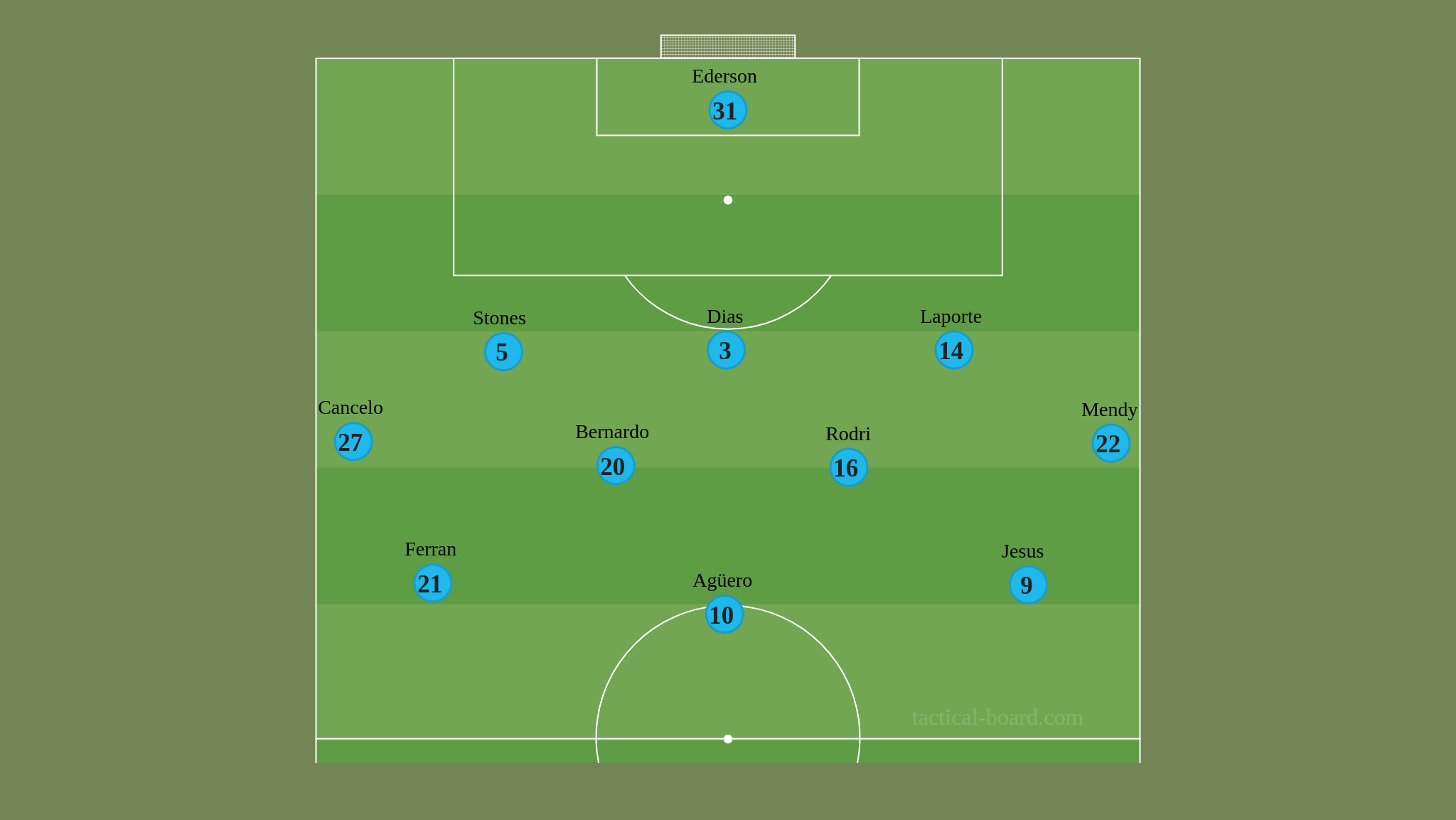
They lined up in a 3-4-3, with Ederson in goal and John Stones, Rúben Dias and Aymeric Laporte in front of him. João Cancelo and Benjamin Mendy were the two wing-backs, while Bernardo Silva partnered Rodri in midfield. Ferran Torres, Sergio Agüero and Gabriel Jesus made up an exciting new-look front-three.
Defensive shape
First of all, let us take a look at how Manchester City worked without the ball.
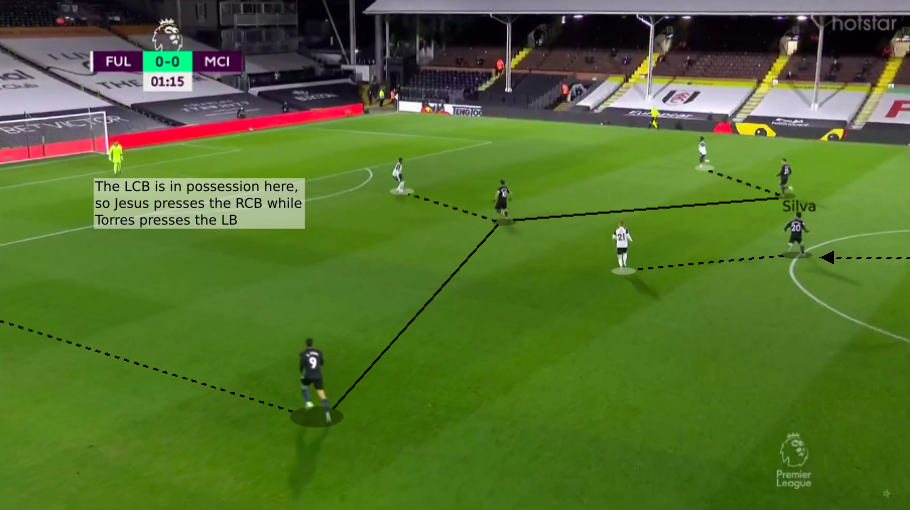
Manchester City used a 1-3 in their press. Agüero pressed their centre-back in possession, while Torres and Jesus pressed one full-back (depending on which centre-back had the ball) and the other centre-back. Silva pushed up from holding midfield to mark Harrison Reed.
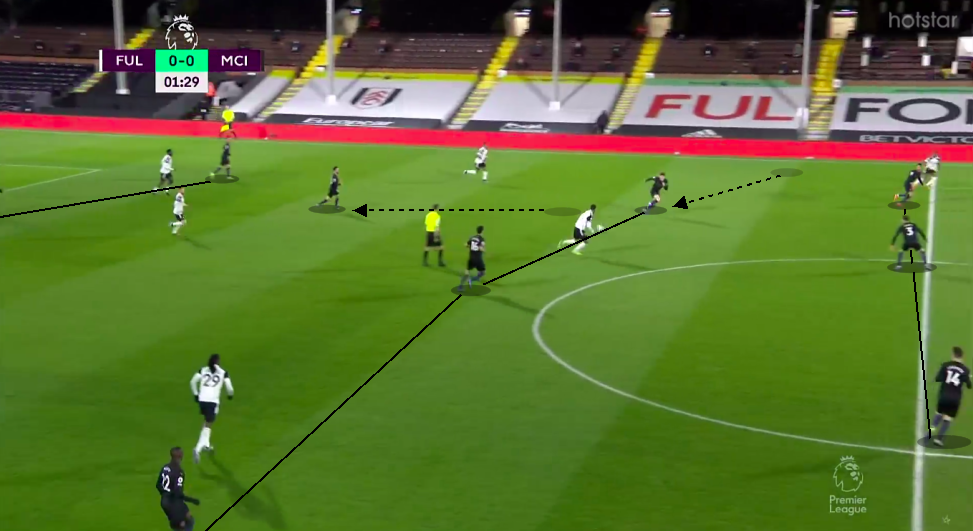
Therefore, City’s overall formation while pressing was a 3-3-1-3, as the two wing-backs went to either side of Rodri and came slightly narrow to combat Fulham’s congested midfield, which was emphasised by the usage of a false-nine.
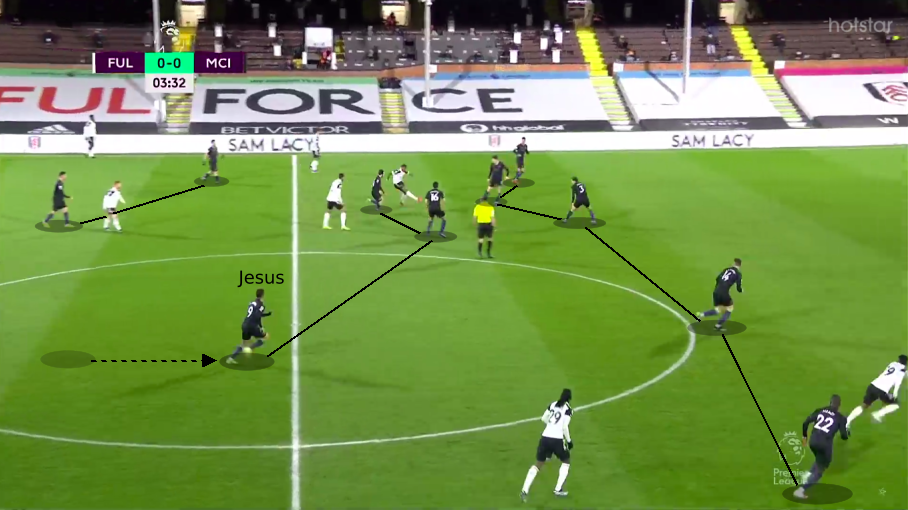
The away side shifted into a back-five in defence, while one of the wingers (usually Jesus) dropped into midfield to create a 5-3-2.
Now, let’s see what City did with the ball.
Build-ups
Manchester City took time to acclimatise to their new system, so they saw a relatively low 53.9% of the ball. Their possession-play ad build-ups did not look as sharp as always, particularly in the first half, but that is only natural in an experimental formation.
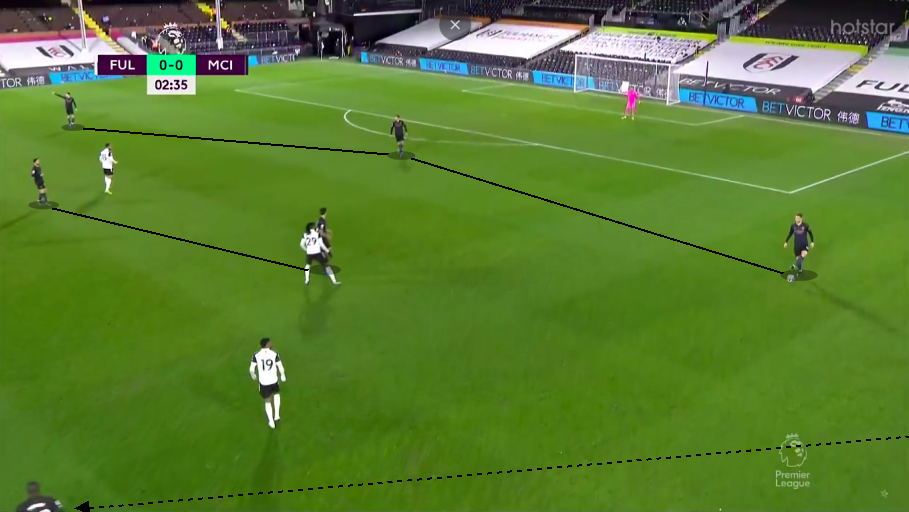
They built up in their typical 3-2 shape, but this time, there was no inverted full-back. Instead, it was just the three centre-backs and two midfielders, as the wing-backs were asked to hold their width and push forward.
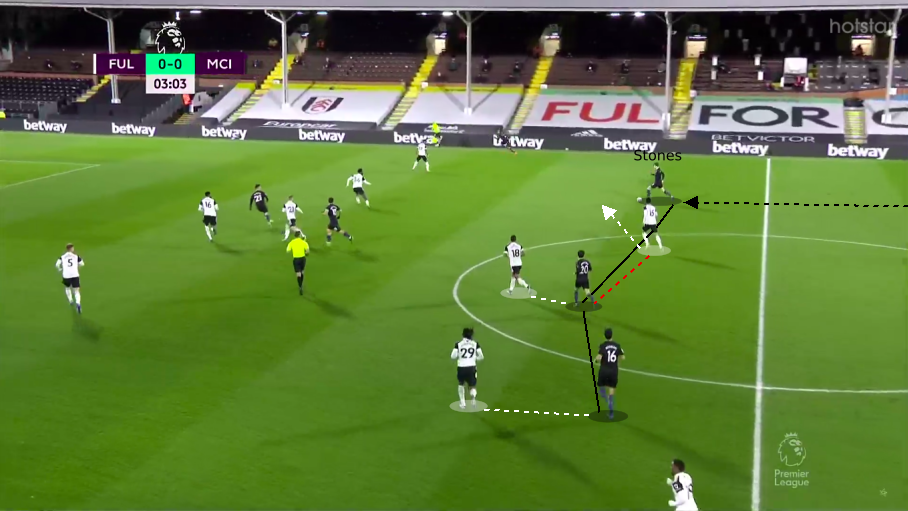
Due to the nature of their defensive set-up and tight midfield, Fulham were able to prevent Manchester City from playing right through them. The visitors were outnumbered in midfield due to their lack of inverted full-back, so John Stones often pushed up from centre-back in possession to combat this.
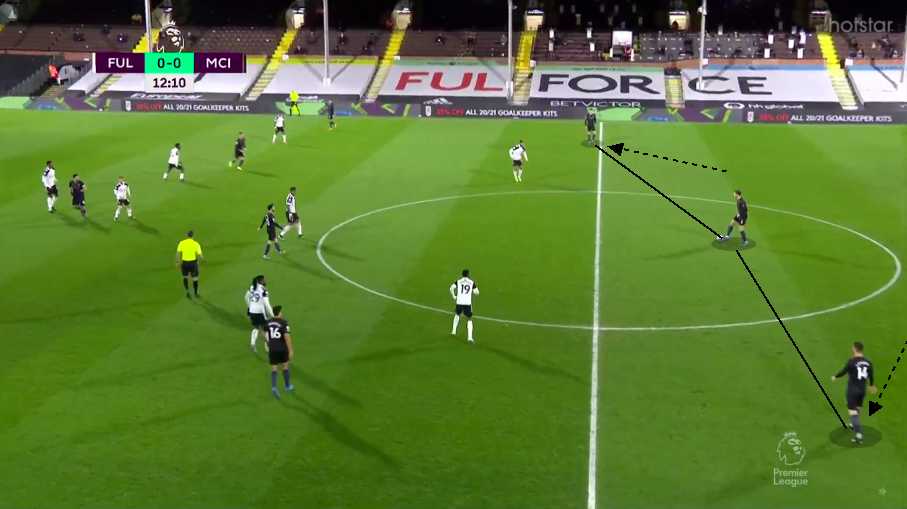
The second ploy that Guardiola used to break Fulham down was to spread his centre-backs out. Only 27% of City’s attacks came from the centre, and that was partly because both Stones and Laporte positioned themselves quite wide.
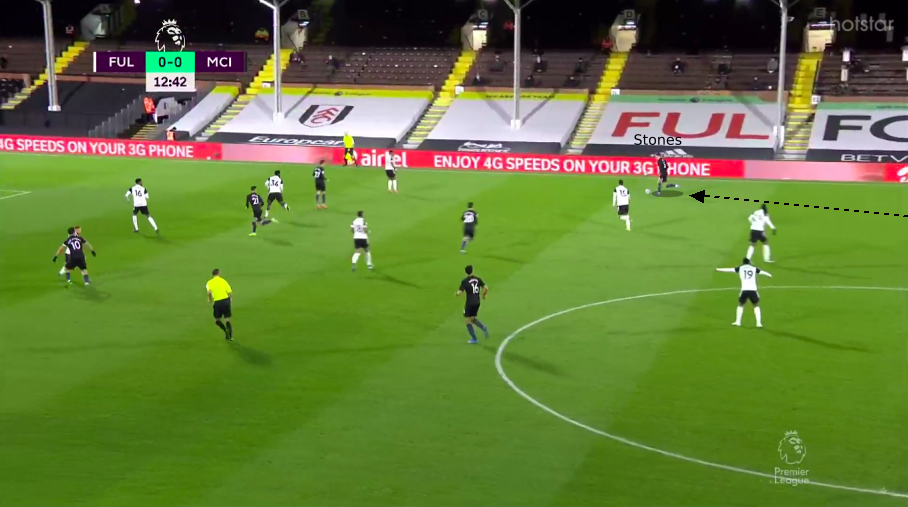
Here too, Stones had the greater freedom to push forward, as he effectively operated as a right-back at times.
Moving on, let’s take a look at how City operated further up the pitch.
Attacking rotations
With a new front-three in place, there was quite some intrigue around how Manchester City would work at the sharp end. Although the Cityzens were not at their fluent best against Fulham, there were a few interesting deductions from their attacking system.
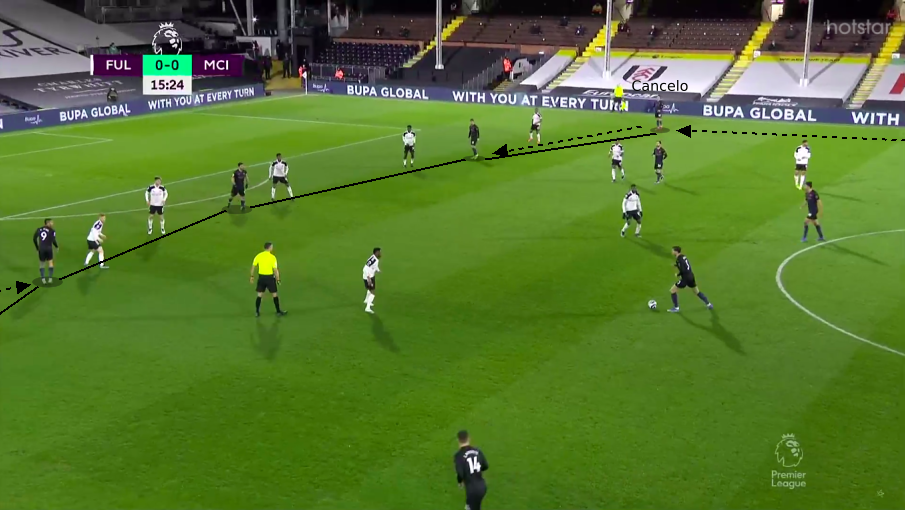
They persisted with a five-man front line, but this time, there was no one pushing up from central midfield, as the wing-backs provided width in attack and the front-three stayed narrow.
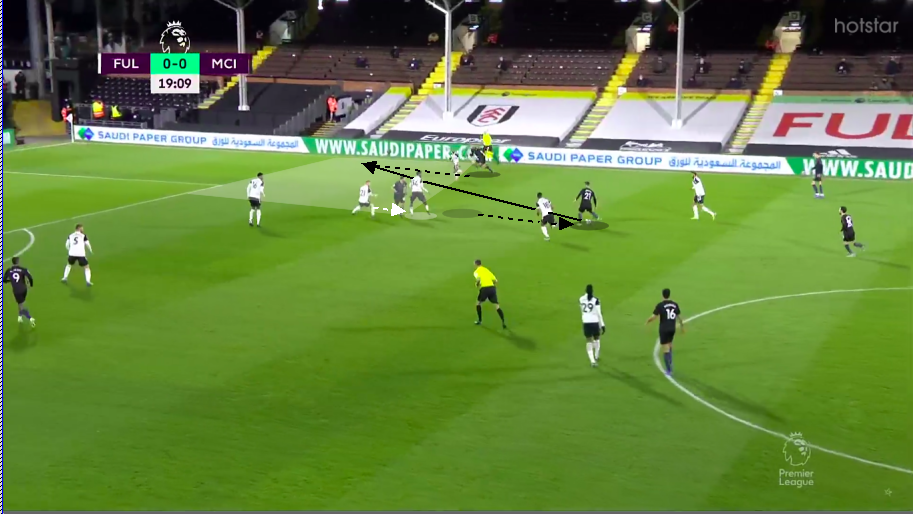
One of the simplest tricks City used to get down the wings involved the winger dropping deep to receive a pass from the defence (more commonly on the right where Stones pushed forward). This would create space in behind the defence, which the advancing wing-back could exploit.
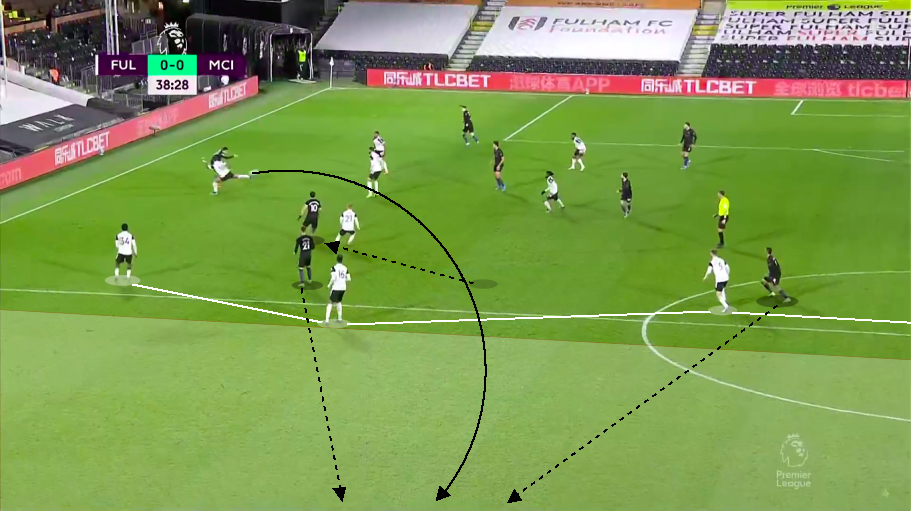
Fulham were quite brave in terms of how high their defensive line was, so City attempted an uncharacteristically high number of long balls (59) to exploit the space in behind. Agüero dropped deep to help stretch the home defence further, while Torres and Jesus made the runs to chase these passes.
At the end of the day, though, City capitalised from three Fulham mistakes to do the scoring; their attacking was not exactly fluid or overly threatening. But, they put the ball in the back of the net thrice, and in the grand scheme of things, that is all that matters from this match.
Conclusion
Manchester City fans were getting Lyon flashbacks when the teamsheet was out with a back-three, but they used the system a lot more successfully against Fulham. It helped that they had three full-time centre-backs on the pitch, but the rest of side worked quite well too. Mendy and especially Agüero will be quite glad to get these rare minutes under their belt, with the latter going one better as he scored for the first time this season and proved that he was willing to work hard for his spot in the squad with some good pressing.
The system that City used undoubtedly still needs a lot of fine-tuning, but as long as it is done in a relatively unimportant Premier League match against relegation candidates and not in the Champions League quarter-finals, it should not matter too much. With that being said, though, the Etihad Stadium will be hosting Borussia Mönchengladbach for the Champions League’s Round of 16 soon, so this might just have been a brilliant piece of foreshadowing from Guardiola.
Stats courtesy WhoScored.
